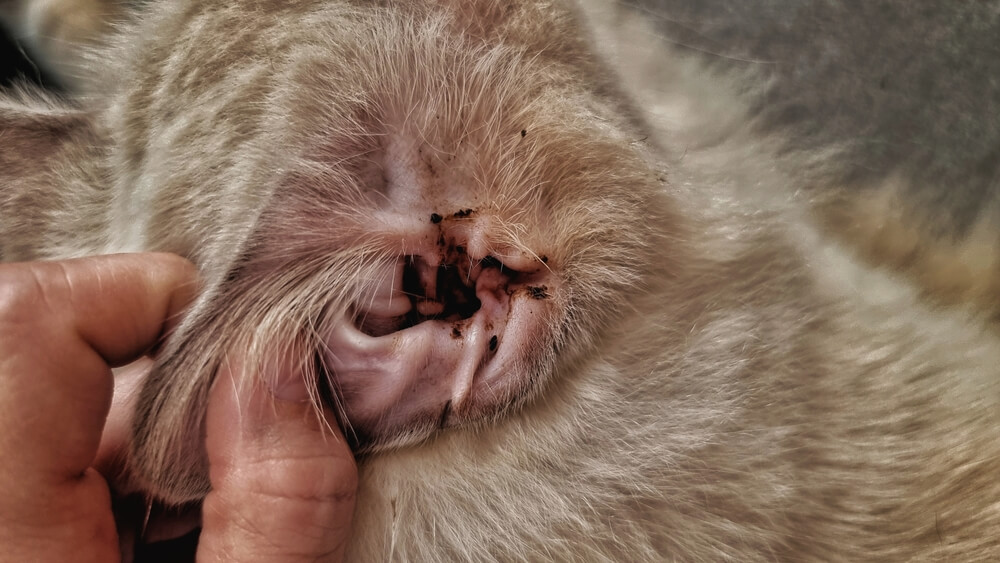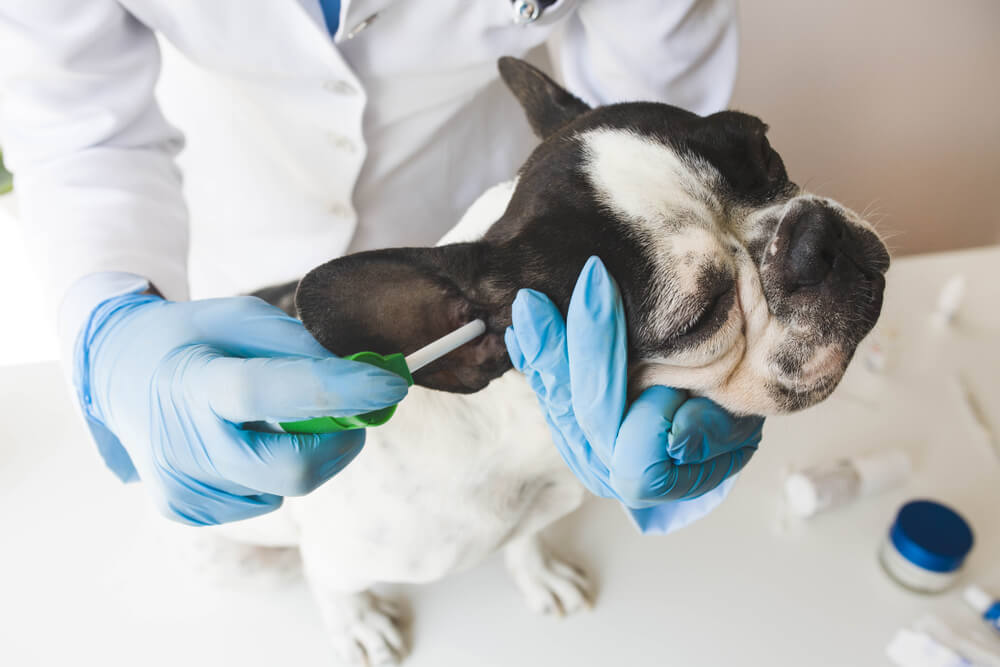
Chronic ear infections can make your dog miserable, causing persistent inflammation, pain, and itchiness, and leading to sleep disruption, personality changes, and poor quality of life. The Towne Centre Animal Hospital team understands that recurring ear infections can be as frustrating for you as they are for your four-legged friend. Stop your dog’s irritation-infection-medication cycle by following our tips on how to improve your dog’s ear health, and help them feel good again.
Reasons for dogs’ ear infections
If your dog experiences recurring ear infections (i.e., otitis externa), it is important to understand and address the cause—not simply treat the signs—by scheduling a complete health examination with your Towne Centre Animal Hospital veterinarian, who will assess your pet’s general health, identify the infection-causing organism, and prescribe rapid relief through targeted medication and treatment.
Ear infections can develop for many reasons, including:
- Conformation (i.e., the dog’s natural structure) — Bacteria or fungal organisms multiply in a dark, moist, and warm environment, which is why chronic ear infections plague dog breeds such as those with hanging ears (e.g., hounds, spaniels, retrievers), narrow ear canals (e.g., Shar-pei, bulldogs, chow chow), or inner-ear hair (e.g., poodles, shih tzu).
- Foreign objects — Seeds such as grass awns can enter the ear and become lodged in the canal, creating localized inflammation and infection. Small tumors can cause similar signs.
- Allergies — Food or environmental (i.e., inhaled) allergies cause chronic inflammation, leading to ear infections. Dogs may also show allergy signs such as pruritus (i.e., generalized itching), coat changes, or foot licking.
- Ear mites — These tiny, contagious, spider-like insects create brown crumbly wax, and cause intense itching, leading to secondary bacterial infections.
Dogs’ ear infection signs
If your dog has suffered from ear infections, you are likely familiar with an infected ear’s look and odor. Familiarizing yourself with an ear infection’s initial subtle warning signs can prompt you to seek treatment sooner the next time your dog shows signs such as:
- Head shaking or scratching
- Head tilting to one side
- Head or face rubbing on carpets or furniture
- Touch sensitivity, especially the head, neck, or face
- Uncharacteristic lethargy, anxiety, or aggressive behavior
You may notice additional changes inside your dog’s ear:
- Redness
- Greasy hair
- Thickened tissue
- Odor
- Brown waxy discharge
- Yellow or green fluid discharge
The best way to identify early-stage ear infections is through weekly cleaning. By regularly looking inside your dog’s ears, you are more likely to identify ear texture changes, odor, and discharge. If significant discharge is present in your dog’s ears, contact your Towne Centre Animal Hospital veterinarian before cleaning to avoid disrupting the ear flora, possibly affecting the diagnosis.
Breaking your dog’s chronic ear infection cycle

Our veterinarian will assess your pet’s ear health and overall well-being. If your pet’s ears are not too painful, the veterinarian will look inside the ear canal, using an otoscope to visualize the translucent eardrum. If your dog’s eardrum is intact, the veterinarian will take an ear discharge sample for microscopic cytology or additional testing (e.g., bacterial culture, sensitivity).
Once we diagnose your dog’s ear ailment, our team will give you detailed prescription information, explaining product application (e.g., medication, cleaner) for at-home use. In addition, we will /contact-us—typically 7 to 14 days from the initial visit—to ensure your dog’s ear condition is improving. You can help keep your pet’s ear infection at bay by following these recommendations:
- Complete the treatment — If your dog requires daily medication, follow the prescription instructions, and continue treating for the prescribed number of days. If your dog appears to feel better or the ear’s appearance has improved, do not discontinue the medication, as this can create resistant infections that are more difficult to treat.
- Clean with care — Excessive cleaning can worsen ear inflammation, so use the veterinarian-recommended medicated ear cleaner and follow these gentle but effective techniques:
- Soak a cotton ball in medicated ear cleaner, and warm it in your hands for a minute or so.
- Gently insert the cotton ball in the vertical ear canal.
- Lightly hold the ear base (i.e., where the ear meets the head) and gently massage—you will likely hear a squishing sound.
- Remove the medicated ball, and keep using a dry ball until all visible cleaner is absorbed.
- Avoid using cotton swabs, which can easily accidentally poke your dog’s ear, causing pain.
- Clean once weekly or as directed by your Towne Centre Animal Hospital veterinarian.
- Keep ears dry — Moisture breeds bacteria, so thoroughly dry your dog’s ears after swimming or bathing. For long or fringed ears, use a snood to prevent that pretty hair from wicking up water on wet grass or during meal time.
- Improve airflow — Ask your groomer to shave inside your dog’s ears to allow better airflow to the canal. Regularly pluck any hair that your dog has inside the canal.
- Change your dog’s food — If the veterinarian suspects your dog has food allergies, they will recommend that you transition your dog to a new diet made with a novel protein (i.e., a protein your dog has never eaten before). For accurate feeding trial results, your pet must eat this food exclusively (i.e., no treats, no “people food”) for four to eight weeks. If your dog’s ear health improves, your veterinarian may suggest additional diet adjustments to identify the specific allergen.
Chronic ear infections cause dogs discomfort, but they are treatable. To determine the underlying cause of your dog’s ear infection, contact your Towne Centre Animal Hospital veterinarian. By staying diligent about your dog’s at-home ear care—together—we can defeat your dog’s chronic ear infections once and for all.
